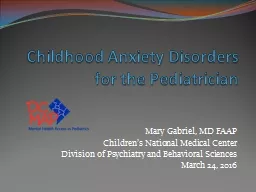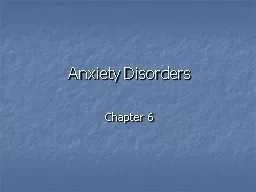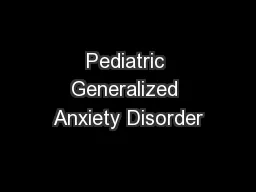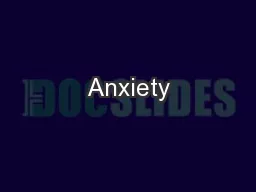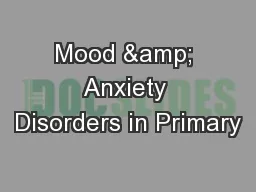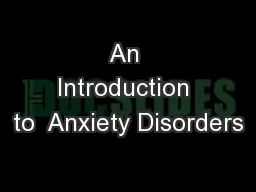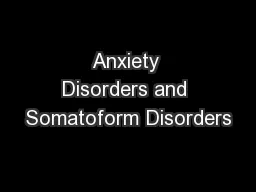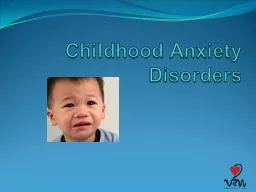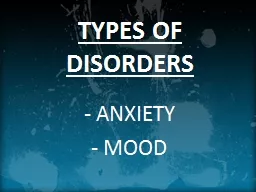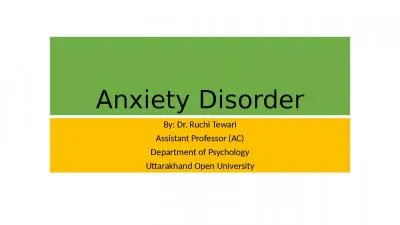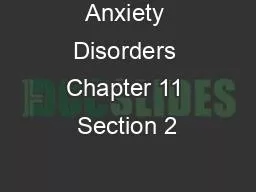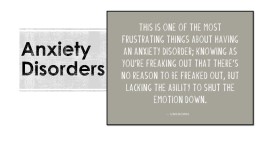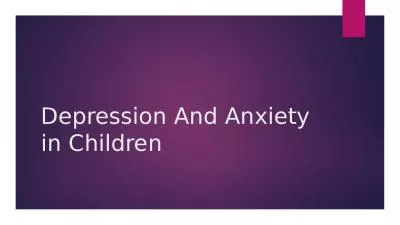PPT-Childhood Anxiety Disorders for the Pediatrician
Author : myesha-ticknor | Published Date : 2017-07-24
Mary Gabriel MD FAAP Childrens National Medical Center Division of Psychiatry and Behavioral Sciences March 24 2016 Objectives Identify normal vs pathological worry
Presentation Embed Code
Download Presentation
Download Presentation The PPT/PDF document "Childhood Anxiety Disorders for the Pedi..." is the property of its rightful owner. Permission is granted to download and print the materials on this website for personal, non-commercial use only, and to display it on your personal computer provided you do not modify the materials and that you retain all copyright notices contained in the materials. By downloading content from our website, you accept the terms of this agreement.
Childhood Anxiety Disorders for the Pediatrician: Transcript
Download Rules Of Document
"Childhood Anxiety Disorders for the Pediatrician"The content belongs to its owner. You may download and print it for personal use, without modification, and keep all copyright notices. By downloading, you agree to these terms.
Related Documents

